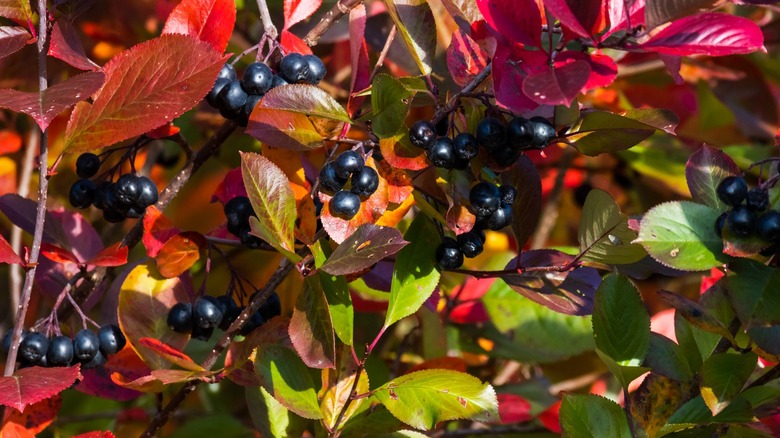The burning bush, known formally as Euonymus alatus, is originally from Asia, and it is classified as an invasive species. It has become popular because of its bright neon red-orange foliage in the fall, and the fact that it’s easy to grow. But it’s extremely aggressive, taking over practically every native species around if it gets out of hand. Luckily, there are several great alternatives that are native species and won’t be harmful to the environment.
The burning bush grows to between 10 and 15 feet tall, and like most invasive species, it escaped its natural environment and now causes major problems for native habitats. It’s become such a widespread issue that it’s even banned for sale in some states. If you have smaller seedlings, they can simply be pulled up by hand, or bushes can be mowed or cut down to the ground until they stop resprouting. However, herbicides will likely be needed for substantial burning bush growth. Or, you can avoid the problem in the first place by planting some great alternatives.
Red chokeberry or serviceberry

The first option we’ll cover is the red chokeberry, a shrub that has some terrific benefits. In addition to having similar beautiful red foliage as burning bush in the fall, it also grows bright red berries, tasty to both people and wildlife. There are also pink and white flowers that cover the bush in the springtime. This is a good choice if you live in the Eastern part of the country, hardy in zones 4 through 9. It can grow in multiple different soil types and can thrive when placed in partial shade all the way to full sun. This bush can grow up to 10 feet tall and 6 feet wide, so it makes the ideal substitute for burning bush.
Native to the northern portion of the country and hardy in zones 3 through 9 is the serviceberry. Its leaves turn red, orange, and yellow in the fall, and clusters of flowers appear in the spring. Serviceberry also grows a deep purple-colored fruit that will attract wildlife and birds. This bush makes a good screen, because it reaches 10 feet in height, and spreads its width out slowly through a system of rhizomes underground. Serviceberry shrubs like a well-draining soil and can tolerate full sun or partial shade. This makes a good alternative as well.
Fragrant sumac or mapleleaf viburnum
Fragrant sumac is another great choice instead of burning bush, and it’s a native species that hosts butterfly and moth larvae. It’s hardy in zones 2 through 8, and it grows 6 to 12 feet tall and 4 to 6 feet wide. This bush is another beautiful fall foliage plant with leaves that turn red, yellow, purple, and orange. True to its name, it also sprouts fragrant yellow flowers in the spring. Butterflies love the nectar of these flowers, and they turn into dark red berries that provide winter sustenance for wildlife. The fragrant sumac bush is easy to grow in multiple types of soil and is drought-tolerant.
Mapleleaf viburnum makes another great alternative and is a native species hardy in zones 4 through 8. It has lovely fall foliage ranging from pink to red, purple, yellow, and orange. Pink or white buds open to clusters of white flowers, and pollinators love them. In particular, the beautiful spring azure butterfly uses the mapleleaf viburnum as its host plant. In the fall, the purple-blue-black colored berries are ripe just in time to provide winter food for migrating birds and other wildlife. This bush can be grown in shade to partial sun, and in acidic soil of many different qualities. These are just a few of the wonderful alternatives to burning bush that you can plant in your landscape.